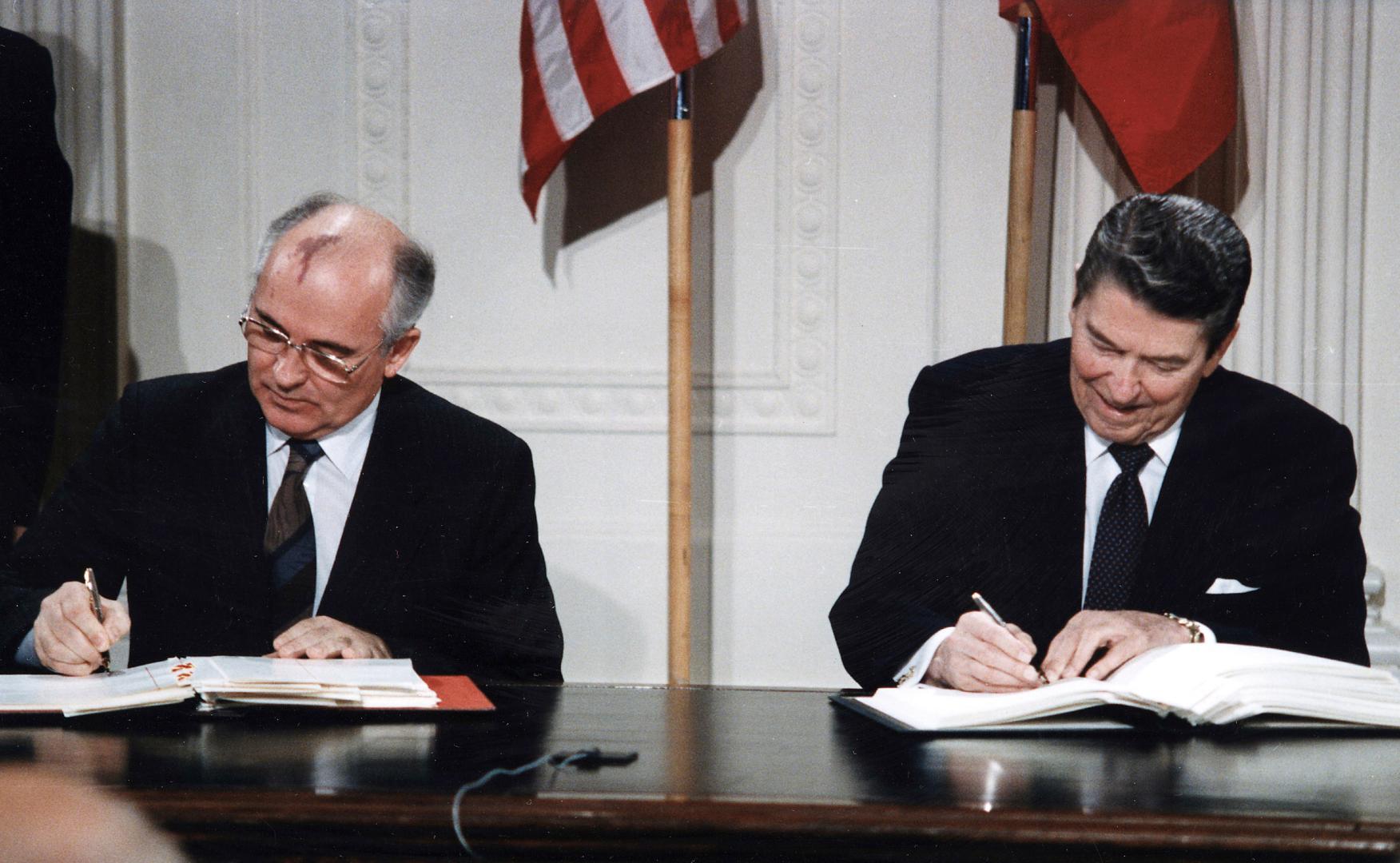The US and USSR signed the INF treaty in 1987 calling for the elimination of existing arsenals of nuclear and conventional ground-launched ballistic and cruise missiles with ranges of between 500 and 5,500 km and prohibited their future production. After the dissolution of the Soviet Union, Belarus, Kazakhstan, and Ukraine became members of the INF. In support of the spirit of the Treaty, Germany, Hungary, Poland, Slovakia, and Bulgaria, also abolished their missiles.
The treaty marked the first time the superpowers had agreed to reduce their nuclear arsenals, eliminate an entire category of nuclear weapons, and employ extensive on-site inspections for verification. As a result of the INF Treaty, the United States and the Soviet Union destroyed a total of 2,692 short, medium, and intermediate-range missiles by the treaty's implementation deadline of June 1, 1991. By May 1991 the US and the USSR had eliminated all systems falling under the INF treaty, The disarmament was verified by an extensive verification regime, including on-site inspections, which continued until May 2001.
Why It Matters
The INF was a groundbreaking agreement slowing the arms race between the US and USSR. At its peak in 1986 the arsenals of both superpowers contained 70,300 nuclear warheads. Achievement of the INF had been preceded by an outpouring of public concern on both sides of the Atlantic about nuclear dangers and threats. The INF eliminated an entire category of nuclear weapons, and employed extensive on-site inspections for verification.
In its July 2014 Compliance Report the US reported that Russia was in violation of its INF Treaty obligations “not to possess, produce, or flight-test” a ground-launched cruise missile having a range of 500 to 5,500 kilometers or “to possess or produce launchers of such missiles.” Subsequent State Department assessments in 2015, 2016, 2017, and 2018 repeated these allegations. In March 2017, a top US official confirmed press reports that Russia had begun deploying the noncompliant missile. Russia has denied that it is in violation of the agreement and has accused the United States of being in noncompliance.
On Oct. 20, 2018, US President Donald Trump announced his intention to “terminate” the INF Treaty, citing Russian noncompliance and concerns about China’s intermediate-range missile arsenal. On Dec. 4, 2018, Secretary of State Mike Pompeo announced that the United States found Russia in “material breach” of the treaty and would suspend its treaty obligations in 60 days if Russia did not return to compliance in that time. On Feb. 2, the Trump administration declared a suspension of US obligations under the INF Treaty and formally announced its intention to withdraw from the treaty in six months. Shortly afterwards, Russian President Vladimir Putin also announced that Russia will be officially suspending its treaty obligations as well.
On Aug. 2, 2019, the United States formally withdrew from the INF Treaty.
Further materials:
https://kozmetskycenter.org/briefing-january2019/
https://www.armscontrol.org/factsheets/INFtreaty
https://nuke.fas.org/control/inf/text/inf.htm





